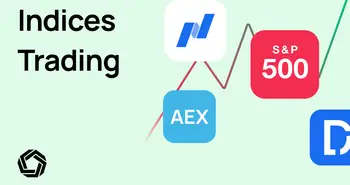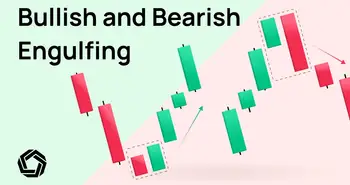Stock Market Books For Beginners

If you're embarking on a journey into the complex world of the stock market, this article is your comprehensive guide. With a focus on broad coverage of various topics, we've compiled a list of 15 informative and highly recommended books to help you navigate this exciting and potentially lucrative arena.
Starting with the most well-known and essential titles for complete novices, we'll also introduce you to some less commonly known but highly informative options to broaden your knowledge base. If you're seeking an even larger selection, be sure to check out our companion guide featuring over 25 additional books on investing.
While many online articles may offer the same standard recommendations, we've strived to bring you some unique and less commonly known choices, in order to broaden your knowledge base and expand your investment strategies. Without further ado, start your investment journey and enter the big arena of the stock market.

List Of Fifteen Stock Market Books For Beginners
1. “The Little Book That Still Beats the Market” by John C. Bogle
The first book on our list is a classic. In “The Little Book That Still Beats the Market,” Joel Greenblatt shares his tried-and-true formula for achieving market-beating returns through a focus on value investing. With a no-nonsense approach, Greenblatt lays out his Magic Formula for selecting undervalued companies that have the potential to provide substantial returns. This straightforward guide is an essential read for anyone looking to make smart, informed investments.
2. “What Works on Wall Street: The Classic Guide to the Best-Performing Investment Strategies of All Time” by James O'Shaughnessy
“What Works on Wall Street: The Classic Guide to the Best-Performing Investment Strategies of All Time” by James O'Shaughnessy is a comprehensive guide to the world of investing and financial markets. Spanning over 700 pages, O'Shaughnessy provides investors of all levels with an in-depth overview of the most successful strategies that have been used by the world's most successful investors. He explores the fundamentals of investing, how to properly research stocks, how to select the right stocks, and how to create a portfolio that will yield the best returns over time. In addition, he also provides a detailed analysis of the past, present, and future of the stock market, as well as the tools and techniques used by the most successful investors. In short, What Works on Wall Street is a must-have for any investor who wants to stay ahead of the game and make the most of their investments.
“What Works on Wall Street is indisputably a major contribution to empirical research on the behavior of common stocks in the United States. . . . Conceivably, the influence of What Works on Wall Street will prove immense. ”
The Financial Analysts’
3. “The Only Investment Guide You'll Ever Need” by Andrew Tobias
“The Only Investment Guide You'll Ever Need” by Andrew Tobias is a 320-page guide for those who want to know the basics of investing, but don't have the time or resources to become a full-time investor. Tobias covers topics such as the basics of investing, how to select the right investments, the different types of investments, and how to build an investment portfolio. He outlines the best strategies for investing and provides tips on how to get the most out of your investments. This guide is an invaluable resource for anyone looking to get a better understanding of investing and how to become successful at it.
“So full of tips and angles that only a booby or a billionaire could not benefit.”
New York Times
4. “YOU CAN BE A STOCK MARKET GENIUS” by Joel Greenblatt
“You Can Be A Stock Market Genius” by Joel Greenblatt is an entertaining, no-nonsense guide to investing. The author, an experienced investor, guides the reader through the basics of stock market analysis, teaching readers to think like a professional investor. With 300 pages of solid advice, Greenblatt provides a comprehensive overview of the world of investing, from strategies for finding undervalued stocks to how to protect your portfolio in a downturn. He provides insight into his own investment experiences, sharing his successes and failures, and helps readers to develop the skills needed to make their own stock market decisions.
5. “MASTERING THE MARKET CYCLE” by Howard Marks
“Mastering the Market Cycle” is a 340-page book by renowned investor and author Howard Marks. In it, Marks explores the cyclical nature of market performance and discusses the strategies necessary to navigate the inevitable downturns and come out ahead. Marks dives deep into the theory of investing and offers practical advice on how to anticipate and react to the ever-changing market environment. Through his years of experience, Marks has developed an approach to investing that stands to benefit those who follow it. He provides tips on how to identify and capitalize on opportunities, as well as how to manage risk effectively.
“Mastering the Market Cycle is a must-read”
Ray Dalio
6. “Capital Returns: Investing Through the Capital Cycle: A Money Manager’s Reports” by Edward Chancellor
The financial rollercoaster of investing as described in “Capital Returns: Investing Through the Capital Cycle: A Money Manager's Reports” by Edward Chancellor is akin to a wild ride. This book is a 210-page exploration of the cyclical nature of markets and how to navigate them. Chancellor's unique approach to investing offers readers an opportunity to understand the different stages of the capital cycle and uncover the secrets to successful investing during each phase. He explains the historical risks of each cycle, the potential pitfalls investors should avoid, and the opportunities that can be found in each period. This book is an invaluable resource for any investor who wants to stay ahead of the markets.
‘Forget Warren Buffett. If you really want to know how markets work read this.'
Merryn Somerset-Webb, Editor, MoneyWeek
7. “Common Stocks and Uncommon Profits” by Philip A. Fisher
“Common Stocks and Uncommon Profits” by Philip A. Fisher is a classic book on stock market investing, published in 1958 and still highly relevant today. In the book, Fisher draws upon his decades of experience as an investor to share his principles of successful stock market investing. He focuses on the importance of understanding the underlying fundamentals of a company before investing and encourages readers to take a long-term approach to invest. He also warns against the dangers of speculation and advises investors to stay away from popular stocks. With around 300 pages of detailed advice, “Common Stocks and Uncommon Profits” is a must-read for any investor looking to gain an edge in the stock market.
“Little known to the public, rarely interviewed and accepting few clients, Philip Fisher is nevertheless read and studied by most thoughtful investment professionals . . . everyone will profit from pondering—as Warren Buffett has done—the investment principles Fisher espouses.”
James W. Michaels Editor, Forbes
8. “Value Investing: From Graham to Buffett and Beyond” by Bruce C. Greenwald
“Value Investing: From Graham to Buffett and Beyond” by Bruce C. Greenwald is a journey into the world of financial innovation and exploration. It is a deep dive into the world of value investing, a process of investing that has brought success to many investors. Drawing on the wisdom of the greatest investors in history, including Benjamin Graham and Warren Buffett, the author guides readers through the intricacies of this strategy. With over 450 pages, this book provides a comprehensive look into value investing, exploring its philosophies, and providing a clear roadmap for success. It is a must-have for any investor that wants to learn the secrets of the masters.
9. “How to Trade In Stocks” by Jesse Livermore
In his groundbreaking book “How to Trade In Stocks,” Jesse Livermore has provided an essential guide for any investor interested in making money in the stock market. With 150 pages of insight and wisdom, Livermore takes the reader on a wild ride through the ins and outs of trading stocks. From tips on how to spot trends, to advice on how to manage risk, Livermore's book is an invaluable resource for any entrepreneur looking to get into the stock market. He shares his own experiences and provides a step-by-step guide on how to make sound investments.
10. “Reminiscences of a Stock Operator” by Edwin Lefevre
“Reminiscences of a Stock Operator” by Edwin Lefevre is a classic in the world of finance and investing, with around 400 pages of insight into the frenzied world of the stock market. The book follows the life of speculator Jesse Livermore, from his humble beginnings as a teenager on the trading floor to his eventual rise to fortune and subsequent fall from grace. It is as much a cautionary tale as a celebration, showing the risks and rewards inherent in the turbulent world of stock speculation. Thompson-esque in its vivid detail and unvarnished truth, Reminiscences of a Stock Operator is a must-read for any investor, novice or otherwise. It is an unflinching account of the highs and lows that come with speculating, and a powerful reminder of the importance of risk management in any investment strategy.
11. “How I Made $2,000,000 in the Stock Market” by Nicolas Darvas
The book “How I Made $2,000,000 in the Stock Market” by Nicolas Darvas is an intriguing insight into the world of stock trading. Darvas takes the reader on a journey through his own experiences with stock trading. With an easy-to-understand style, he explains the techniques that made him millions of dollars. He explains the importance of understanding the fundamentals of stock markets and how to apply them to your own trading. He also emphasizes the need to be disciplined and not get too caught up in the emotions of stock trading. With around 190 pages, this book is a must-read for any aspiring stock trader.
12. “The Greatest Trade Ever: How John Paulson Bet Against the Markets and Made $20 Billion” by Gregory Zuckerman
John Paulson, the titular character of Gregory Zuckerman's “The Greatest Trade Ever: How John Paulson Bet Against the Markets and Made $20 Billion,” was a little-known Wall Street hedge fund trader before 2008. But in the years leading up to the great financial collapse of 2008, Paulson's keen insight and bold moves would make him one of the most successful traders of all time. This 300-page book tells the story of Paulson's incredible bet against the markets, and how it eventually netted him $20 billion in a single year. It also takes a look at the controversial aspects of Paulson's success, as well as the implications of his huge win on Wall Street and the American economy. The Greatest Trade Ever is a fascinating look at the financial world and a remarkable story of one man's incredible success in the face of daunting odds.
“Simply terrific. Easily the best of the post-crash financial books. Rarely in human history has someone made so much money in so short a time. ”
Malcolm Gladwell
13. “100 Baggers: Stocks That Return 100-to-1 and How To Find Them” by Christopher W. Mayer
“100 Baggers: Stocks That Return 100-to-1 and How To Find Them” by Christopher W Mayer is a 230-page book that details the ways to find stocks that may return 100 times what an investor has put in. Mayer uses his expertise in stock analysis to provide readers with a blueprint for success in the stock market. He delves into the history of stocks that have achieved 100 bagger returns and then outlines what can be done to identify those stocks before they reach those levels. He provides readers with a detailed guide on how to do so by using the appropriate criteria and also suggests strategies that investors can employ to maximize potential returns. It is like using a 100x leverage strategy but trading without leverage, as there is very low risk in his investments. Mayer also takes the time to discuss the risks and rewards associated with such investments, as well as the importance of proper portfolio management. In short, this book is a must-read for anyone interested in finding stocks that may offer huge returns.
“100-Baggers is a great read! Chris Mayer has distilled a good deal of the essence from stocks that have grown 100-fold or more in price. Such outcomes happen much more frequently than we might think. Mayer's intense curiosity and his wide reading of many obscure investing books enable him to bring us much useful wisdom to aid our search for these investment gems. And like Joel Greenblatt, he writes in an interesting, unpretentious way. Bravo, Maestro Mayer! “
John L. Schwartz, MD (CEO, Chairman of Value Investing Congress)
14. “Where Are the Customers' Yachts? or A Good Hard Look at Wall Street” by Fred Schwed Jr.
“Where Are the Customers' Yachts?” is a classic financial satire by Fred Schwed Jr. that takes a hard look at Wall Street and the financial world. It's a humorous take on the industry and is written in an approachable and entertaining style. The book is around 200 pages and has been praised by financial writers and investors alike for its insight and wit. Schwed Jr. dissects the industry, exposing the ridiculousness and hypocrisy of the financial markets, and offers a fresh and humorous perspective on how Wall Street works. He also gives readers an understanding of the inner workings of the financial markets and dark pool and provides advice on making better financial decisions. This book is essential reading for anyone looking to gain an understanding of the financial world.
“Once I picked it up I did not put it down until I finished. . . . What Schwed has done is capture fully-in deceptively clean language-the lunacy at the heart of the investment business.”
From the Foreword by Michael Lewis, Bestselling author of Liar's Poker
15. “Devil Take the Hindmost: A History of Financial Speculation” by Edward Chancellor
“Devil Take the Hindmost: A History of Financial Speculation” by Edward Chancellor is a long, deep dive into the history and evolution of financial speculation. Spanning over 400 pages, it is a detailed exploration of the rise and fall of financial markets, the people, and the culture that has shaped them. From the tulip mania of the Dutch Golden Age to the dot-com bubble of the late 90s, Chancellor looks at the highs and lows of financial speculation, and the impact it has had on the world. He analyses the successes and failures of speculators and the consequences of their actions. Written in a vivid and engaging style, “Devil Take the Hindmost” is a must-read for all those interested in the history of finance and speculation.
“An admirably researched and very well-written account of speculative insanity from the earliest times to, let no one doubt, the present. Anyone contemplating a stock market venture and certainly anyone now involved should read this book.”
John Kenneth Galbraith
Conclusion on Beginners’ Stock Market Books
In conclusion, the stock market can be a wild and unpredictable beast, but with the right tools and knowledge, it can be tamed. The 15 books we've highlighted in this article offer a comprehensive guide for beginners looking to navigate the tumultuous waters of the stock market. From the basics of investing to advanced strategies, these books are a surefire way to arm yourself with the information necessary to make informed investment decisions. So buckle up, grab your chips, and get ready to place your bets and confidently outplay the bears on the stock market.
PS: If you're not a big fan of books but a big fan of Morpher, you might want to listen to some great crypto podcasts.


Disclaimer: All investments involve risk, and the past performance of a security, industry, sector, market, financial product, trading strategy, or individual’s trading does not guarantee future results or returns. Investors are fully responsible for any investment decisions they make. Such decisions should be based solely on an evaluation of their financial circumstances, investment objectives, risk tolerance, and liquidity needs. This post does not constitute investment advice.

Painless trading for everyone
Hundreds of markets all in one place - Apple, Bitcoin, Gold, Watches, NFTs, Sneakers and so much more.

Painless trading for everyone
Hundreds of markets all in one place - Apple, Bitcoin, Gold, Watches, NFTs, Sneakers and so much more.









